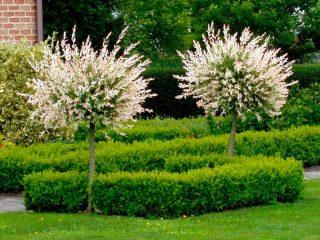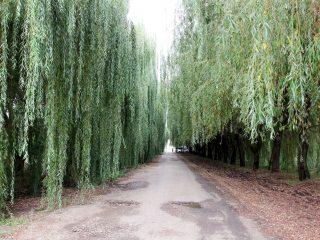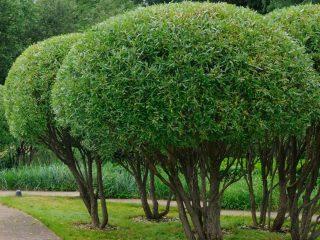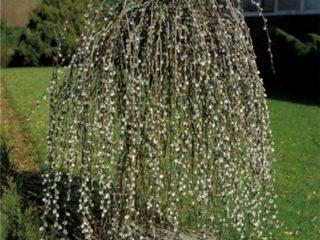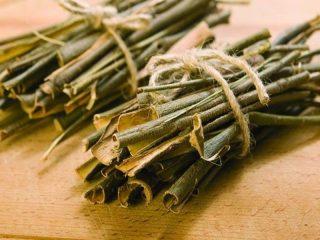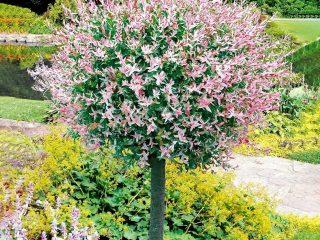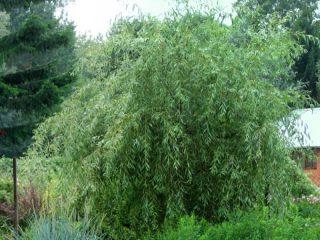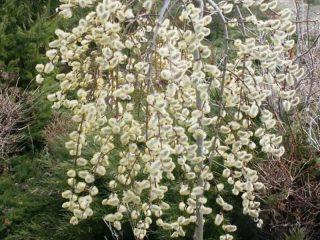Content
Matsudana willow is one of the most beautiful ornamental plants. This is a separate species that is loved by residents of Russia, China and Korea. Many gardeners cannot see their plot without the powerful trunk and spreading crown of this tree.
Origin
Matsudana is a direct descendant of the common willow. It grows naturally in Japan, Korea, China and other eastern countries. The variety was not bred through selection, so it does not have an originator.

In the East, willow is actively used for landscaping urban areas.
Description of Matsudana willow
The culture is called differently: Matsudana, Matsudana, Matsuda, Matsu, Chinese, Beijing, meandering. Grows near the banks of rivers, lakes and canals. Willow is notable for its dense oval or round crown. Depending on the external conditions and qualities of the parents, Matsudana can have different colors and shapes. In this way, willow is unpredictable. The only thing that remains unchanged is the tortuosity of the branches.
The rate of development is quite high, every year the willow grows up to 100 cm in height. Adult specimens reach about 10 m. In Russia they grow up to 5-6 m, so they look more like a shrub than a full-fledged tree.Light brown willow branches are located close to each other. They leave virtually no free space. The color of the Matsudana willow trunk is darker, from a distance it appears to be completely black.
The buds are narrow, lanceolate, about 20 mm wide, 100 mm long. The green mass of young Matsudana willow has pubescence, which disappears after a few years. The foliage becomes glossy. The leaves at the edges are folded towards the center, the tip is pointed. The veins are clearly visible. The sinuous shape of the green plates gives a decorative look. They have a bright green hue that begins to darken with age. By autumn, the willow foliage becomes yellowish and falls off completely. With the arrival of cold weather, Matsudana goes into hibernation.
Catkins are formed together with leaf plates. This usually happens in March, but in Russia it can happen in April. They are small in size, no more than 15 mm. Women's ones differ from men's in a more elegant twisted shape. After flowering, boxes are formed on the Matsudana willow, in which young seeds are waiting in the wings. Because of the abundant pubescence, men's earrings are nicknamed “seals.”
Depending on the growing conditions, willow inflorescences can be small or large. Even the color differs - yellow, red, green, silver. Flower nectar becomes food for bees. Because it is an early flowering willow, insects move in early spring and leave in the summer.

Weeping willow Matsudana has good immunity
Willow prefers moist soils, so it grows near bodies of water. Not afraid of putrefactive diseases. The trunk is strong enough to withstand winds. Frequent rainfall also does not prevent Matsudana from growing. Thanks to its developed root system, the variety quickly takes root in any area.Adventitious roots form within a few days, so willow can be propagated by cuttings. Seeds lose viability after 2-4 days.
Matsudana willow has two ornamental subspecies - tortuosa and erythroflexuosa. The first one is small in size (up to 4 m), lends itself well to pruning, and is characterized by hanging “weeping” branches. Erythroflexuosa grows up to 6 m, but the pace of development is very slow, the crown is dense, the leaves and branches are twisting, the willow can be distinguished by the yellowish color of the foliage.
Advantages and disadvantages
Matsudana willow is not only a decorative, but also a healthy crop. Antipyretic, anti-inflammatory drugs, decoctions for the treatment of osteochondrosis, and relieving muscle fatigue are made from it.

In the land of the rising sun, the Matsudana willow grows to large sizes, while maintaining its sinuosity
Pros:
- interesting shape of branches;
- rapid growth (with the exception of erythroflexuosis);
- good survival rate;
- blooms early;
- convenient to propagate by cuttings;
- compactness.
Minuses:
- willow does not grow on dry soils;
- The crown shape may turn out to be non-standard.
Planting Japanese willow Matsudana
Willow is undemanding when planting. The following instructions must be followed:
- Dig a hole with a volume of 50 cubic meters. cm.
- Lay broken brick or crushed stone for drainage.
- Add a layer of river sand, add compost and humus (in equal proportions).
- If the Matsudana willow has closed roots, it is dug out of the pot and deepened into the soil exactly in the center of the hole.
- In a seedling with an open root system, each shoot is straightened.
- Cover with the same soil and compact.
- The willow is well watered, and the tree trunk area is mulched with straw or sawdust.
A young plant requires care, so at first you need to carefully monitor its reaction.
Features of care
If precipitation is rare, Matsudana willow is watered three times a month. 20 liters is enough for a seedling. If the variety grows near a pond, moisten it no more than once every 30 days. Adult willows do not need watering.
After moistening, the soil is loosened, the area is weeded, and mulched. During the flowering period, Matsudana willow is fed three times. With the arrival of autumn, fertilizers are not applied.
Willow begins to freeze at -29 °C. Young trees require shelter for the winter. Five years after planting this becomes unnecessary. Even if all the branches are frozen, by autumn the willow will again be covered with healthy green foliage.
Reproduction
Matsudana willow is propagated using seeds and cuttings. The first method is used less frequently because it requires special care and experience. Cuttings are harvested in March, before foliage appears. Select samples 25-30 cm long with five shoots.

Matsudana willow seeds are suitable for planting only in loose soil
Diseases and pests
Iva Matsudana has strong immunity. If the rules of agricultural technology are violated, the leaves may become covered with gray spots. This is one of the signs of fungal spotting. Willow is treated by spraying with copper oxychloride.
Natural pests are:
- barbel;
- caterpillars;
- leaf beetles;
- aphid;
- ticks.
Affected seedlings are treated with fungicides.
Iwa Matsudana in landscape design
Designers use Matsudana willow as a shrub. Not a single Japanese garden is complete without dwarf culture. It can decorate any modern style.

Matsudana can be combined with other willows, but they should be planted as far apart as possible
It is grown in a group or separately, used to create hedges, decorate ponds, and introduced into flower beds.
Conclusion
Matsudana willow is an unpretentious variety that prefers moist soils. The plant does not require pruning; it is enough to water it occasionally and do not forget to fertilize the soil. With proper care, decorative crops can become the main object of any site.
Reviews of Matsudana willow
https://www.youtube.com/watch?v=-Ezlrr921YI
